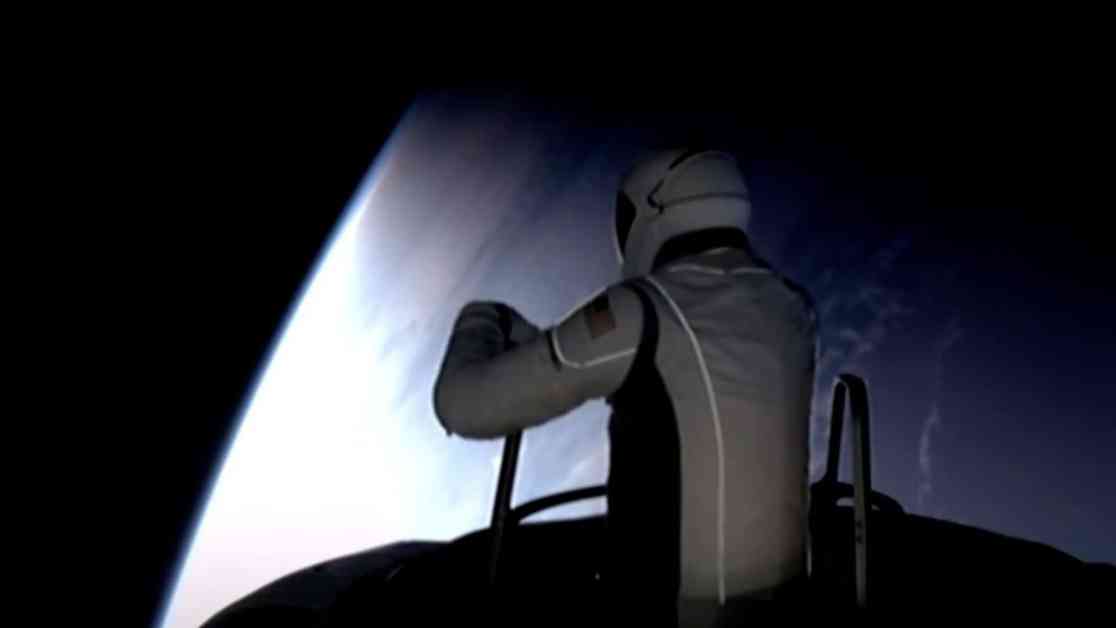SpaceX Capsule Successfully Returns from Groundbreaking Polaris Dawn Mission
In a historic moment for space exploration, the Polaris Dawn mission led by billionaire entrepreneur Jared Isaacman successfully concluded as the SpaceX Dragon capsule carrying four private citizens safely splashed down off the coast of Florida in the early hours of Sunday morning. The mission marked a significant milestone with the world’s first all-civilian spacewalk, showcasing the capabilities of private space travel.
The crew members of the Polaris Dawn mission, including Isaacman, retired Air Force Lt. Col. Scott “Kidd” Poteet, and SpaceX engineers Sarah Gillis and Anna Menon, returned to Earth in the Crew Dragon capsule, touching down in the Gulf of Mexico near Dry Tortugas, Florida. The successful splashdown at 3:36 a.m. ET was met with relief and excitement as operators confirmed the completion of the mission over the radio.
Historic All-Civilian Spacewalk and Risky Maneuvers
One of the most daring aspects of the Polaris Dawn mission was the all-civilian spacewalk that took place during the five-day expedition. Isaacman and Gillis ventured out of the Dragon capsule onto tethers, spending approximately 10 minutes each in the vacuum of space. This groundbreaking spacewalk, conducted without the presence of astronauts from government space agencies, was a significant achievement in human spaceflight history.
The spacewalk presented unique challenges due to the absence of an airlock on the Dragon capsule, requiring all four crew members to wear spacesuits throughout the operation. The capsule was depressurized to vacuum conditions, allowing Isaacman and Gillis to perform mobility tests in their specially designed spacesuits. The successful completion of the spacewalk demonstrated the crew’s capabilities and the advancements in private space exploration.
Exploration at Record Altitudes and Radiation Belt Study
During the Polaris Dawn mission, the crew reached an orbital altitude of 870 miles above Earth, surpassing the heights achieved by astronauts since the final Apollo moon mission in 1972. This milestone allowed the Dragon capsule to pass through part of the Van Allen radiation belt, a zone of high-energy radiation particles trapped by Earth’s magnetosphere.
The journey through the radiation belt provided valuable data for scientists studying the effects of space radiation on crew members and spacecraft. SpaceX aims to leverage these findings to enhance mission planning for future lunar and Mars expeditions, which will require astronauts to navigate through the inner and outer Van Allen radiation belts. The Polaris Dawn mission contributed essential insights into the challenges of long-duration space travel and the necessary precautions for crew safety.
Jared Isaacman, the visionary behind the Polaris Dawn mission, is the founder and CEO of Shift4, a leading payment processing company. As a veteran of private spaceflight, Isaacman funded the mission to further advance space exploration capabilities and test new technologies for extended missions. The success of the Polaris Dawn flight sets the stage for future endeavors in the Polaris program, a collaborative effort between Isaacman and SpaceX to push the boundaries of space travel.
The Polaris Dawn mission exemplifies the spirit of innovation and collaboration in the private space industry, highlighting the potential for commercial ventures to drive progress in human space exploration. As the crew members of the Polaris Dawn mission return to Earth, their experiences and achievements pave the way for future missions to unlock the mysteries of the cosmos and expand humanity’s reach beyond the confines of our planet.






















